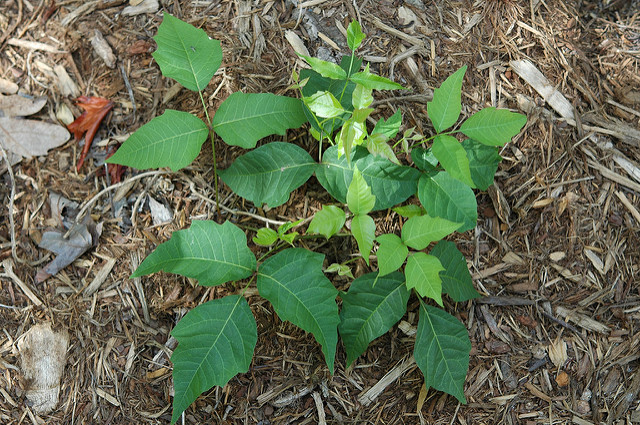Which plant has leaves that grow in clusters of three and are almond shaped? Which plant contains oil that was used as a dye by the Native Americans? I’ll assume you’ve read the title of this article, so you know that the answer is poison ivy! Poison ivy is a toxic plant that, upon contact, causes an itchy and red rash with bumps or blisters. The underlying cause of this allergic reaction is contact with urushiol, a type of oil found in the plant’s leaves, stems, and roots.
The most common ways of getting a poison ivy rash are by directly touching the plant or touching a contaminated object. For example, if you walk through a bush of poison ivy and get urushiol on your pants, touching your pants and then touching your arms or face may cause the rash. Urushiol can stay potent for up to five years, so if a contaminated object, like your pants, isn’t thoroughly cleaned, it can still cause an allergic reaction years after contact. Inhaling smoke from burning poison ivy can also induce a reaction by not only affecting your skin, but also irritating your nasal passages, throat, and lungs.
A poison ivy rash usually develops 12 to 48 hours after contact with urushiol and lasts two to three weeks. The severity of the rash depends on the amount of urushiol on your skin; more urushiol correlates to developing a rash sooner that lasts longer. A common myth is that a poison ivy rash is contagious, but this is false, because the blister fluid from the rash does not contain urushiol.
Image Source: KarenMower
What do you do if you have a poison ivy rash? You should first wash the infected area thoroughly with soap and warm water. You can also apply calamine lotion and hydrocortisone cream to ease itching and blistering. A cool bath with oatmeal-based products can help with the itching as well. Typically, the rash will heal on its own in a matter of weeks, and medical treatment will not be needed. Avoid scratching the rash because that can cause an infection.
How do you prevent getting the rash? Avoid the plant! In order to do this, you have to know potential locations of poison ivy and how to identify the plant. Another way is to cover any exposed skin by wearing protective clothing, such as socks, boots, long pants, long sleeves, and vinyl gloves. You can also apply barrier cream to help prevent developing the rash if you come into contact with urushiol.
I distinctly remember my elementary school teachers warning me about poison ivy, as I was a student going on nature field trips, and urging me to watch where I stepped. The same advice still holds true for me and for everyone else; learn about poison ivy so that you can avoid it!
Feature Image Source: Poison Ivy 034 by John










